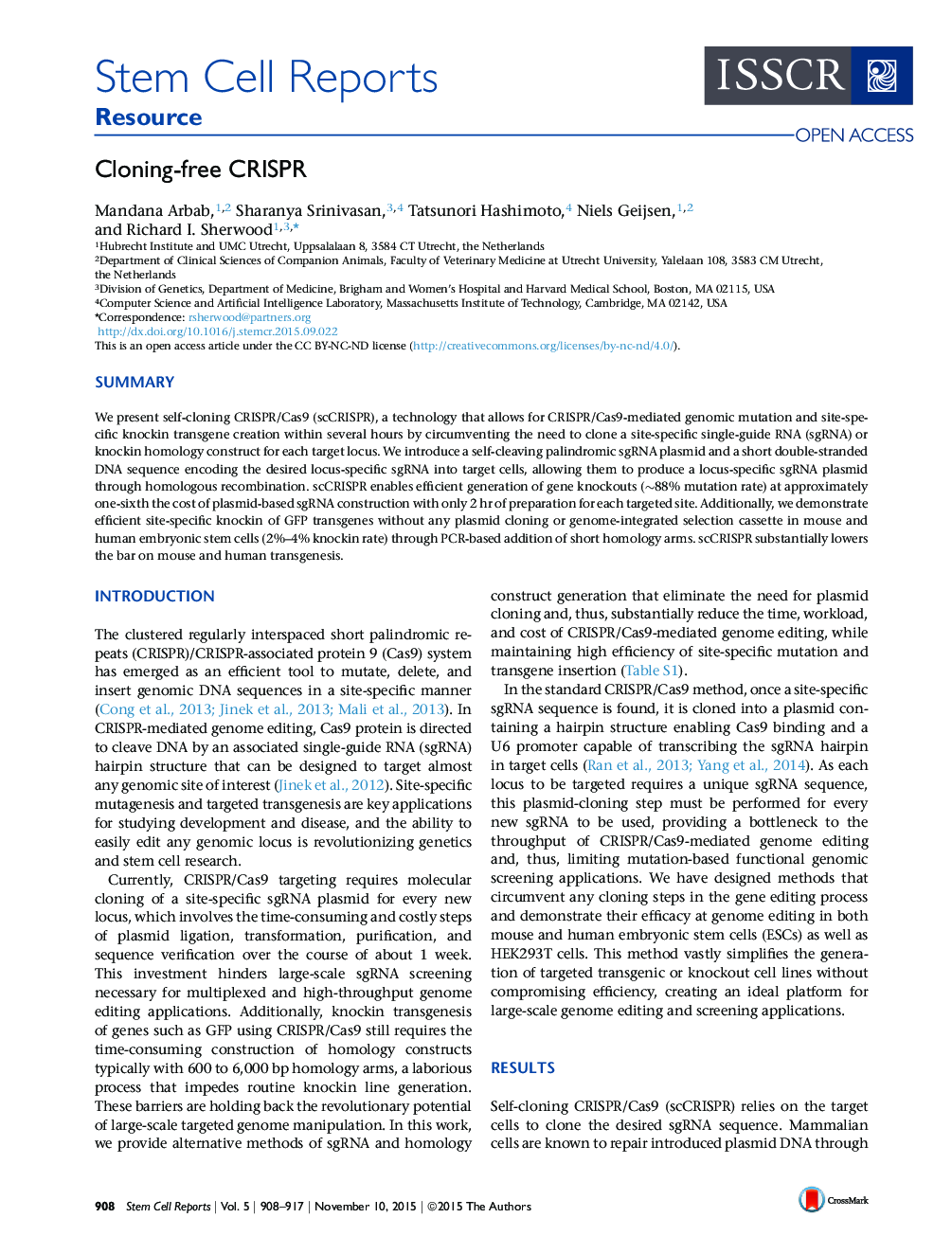| Article ID | Journal | Published Year | Pages | File Type |
|---|---|---|---|---|
| 2093761 | Stem Cell Reports | 2015 | 10 Pages |
•scCRISPR circumvents the need to clone sgRNAs or knockin homology constructs•A self-cleaving palindromic plasmid recombines to produce a locus-specific sgRNA•scCRISPR targets via state-of-the-art efficiency for a fraction of the time and cost•scCRISPR benefits throughput of functional genomic screens and generation of reporter lines
SummaryWe present self-cloning CRISPR/Cas9 (scCRISPR), a technology that allows for CRISPR/Cas9-mediated genomic mutation and site-specific knockin transgene creation within several hours by circumventing the need to clone a site-specific single-guide RNA (sgRNA) or knockin homology construct for each target locus. We introduce a self-cleaving palindromic sgRNA plasmid and a short double-stranded DNA sequence encoding the desired locus-specific sgRNA into target cells, allowing them to produce a locus-specific sgRNA plasmid through homologous recombination. scCRISPR enables efficient generation of gene knockouts (∼88% mutation rate) at approximately one-sixth the cost of plasmid-based sgRNA construction with only 2 hr of preparation for each targeted site. Additionally, we demonstrate efficient site-specific knockin of GFP transgenes without any plasmid cloning or genome-integrated selection cassette in mouse and human embryonic stem cells (2%–4% knockin rate) through PCR-based addition of short homology arms. scCRISPR substantially lowers the bar on mouse and human transgenesis.
Graphical AbstractFigure optionsDownload full-size imageDownload as PowerPoint slide
